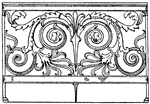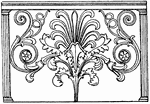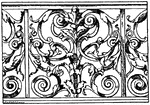Parapets
The Parapets ClipArt gallery includes 17 examples of walls that extend above the roof level. Originally designed to defend a building from military attack, parapets are now used as a safety feature to prevent people from falling off of a roof or to act as a fire wall.

Balustrade
"A Balustrade is a range of balusters, together with the cornice of coping which they support, used…

Battlement
Battlements are indentations on the top of a parapet or wall, first used in fortifications, and afterwards…

Battlement
Battlements are indentations on the top of a parapet or wall, first used in fortifications, and afterwards…

Battlement
Battlements are indentations on the top of a parapet or wall, first used in fortifications, and afterwards…
Battlement
"An indented parapet, formed by a series of rising parts called cops or merlons, separated by openings…

Gothic Architecture Parapet Moulding
Illustration of a Gothic parapet moulding used during the fourteenth century. Parapets are exterior…
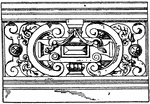
Modern French Parapet
The modern French parapet is a design found on the Hotel Mirabeau in Paris, France.
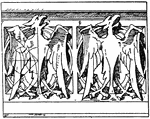
Modern Gothic Parapet
The modern Gothic parapet is a stone design of a wall-like barrier found on the edge of a roof or structure.…

Modern Gothic Parapet
The modern Gothic parapet is a stone design of a wall-like barrier found on the edge of a roof or structure.…

Stone Parapet
The stone parapet is a German Renaissance design of scrolls found on the Dagobert tower, a castle in…

Pons Aelius
"A bridge. As the rivers of Greece were small, and the use of the arch known to them only to a limited…
Pons Ariminum
"A bridge. As the rivers of Greece were small, and the use of the arch known to them only to a limited…

